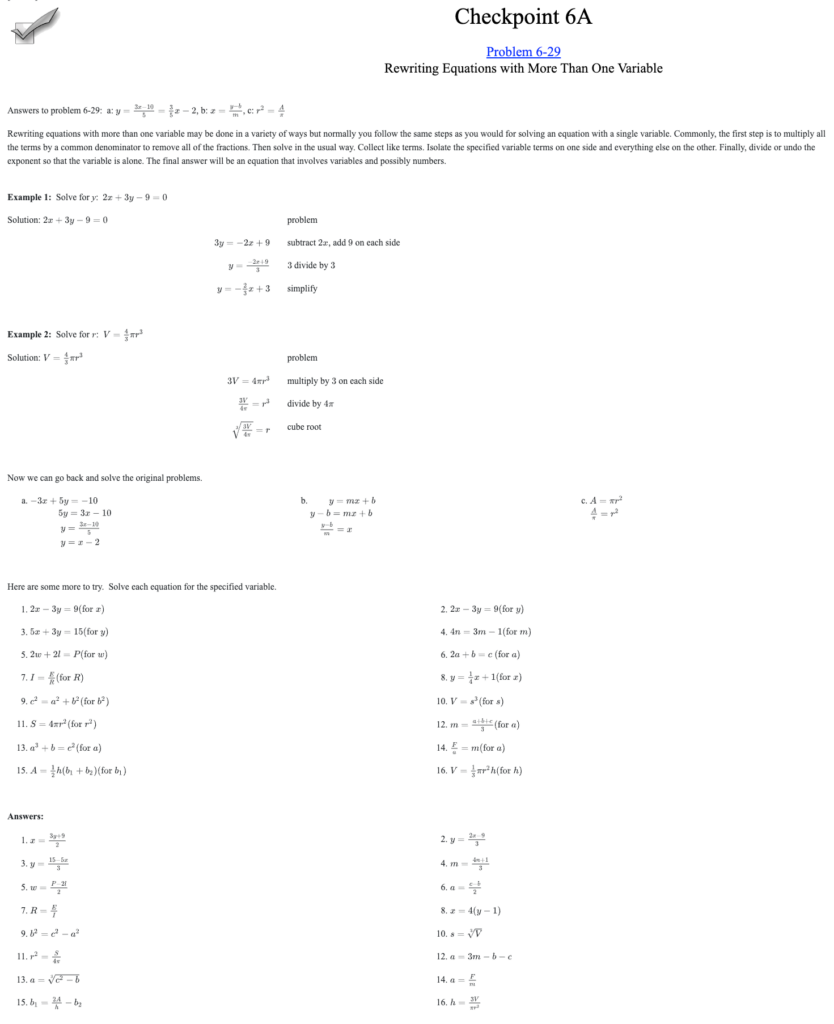Mark Ray, Sun Prairie, WI, markray@cpm.org
I am not going to answer the question in the title for you, but instead tell you a story. Since June of 2018, I have had the pleasure to work with several great intervention math teachers. Most of these great teachers met in Salt Lake City, Utah to prepare to pilot CPM’s new 8th grade support course, Inspirations & Ideas. The work that these teachers have done this past school year has been incredible. But I mostly get to read about it in the feedback they provide about the course. To get a more authentic feel, I took a trip to Parkview Middle School in Ashwaubenon, WI and visited Mrs. Jamie Bernath’s 8th grade intervention math class. This is a story about that visit.
I arrived early at Parkview Middle School and was struck by how close Lambeau Field was to the school. I thought to myself, how cool is it that the Green Bay Packers get to play football this close to a great intervention math teacher. I signed in and waited for Mrs. Bernath to meet me in the office. The office staff was busy with the morning rush, answering phones, helping students, and occasionally taking a moment to breath. Never once did they show a sign that they were stressed or upset with anything they were doing. Maybe there is a culture at this school about supporting students, and maybe it starts as students walk in the front door?
Mrs. Bernath met me at the office and we caught up with things on the walk to her classroom. The bell was about to ring when we arrived so she excused herself to the hallway. She said she needed to greet the students as they walked in. Maybe the culture in this school is to support students at each threshold? I casually snooped around the classroom as I waited for students to arrive and to greet them myself. I noticed several posters exhibiting student work on the walls, and I recognized many of these posters from Inspirations & Ideas. As the students walked in they methodically dropped off their cell phones on a table by the door. Clearly this was an expectation students respected. I could tell students took a lot of pride in their learning in this room.
Class began with a Which One Doesn’t Belong? launch that caused students to really think about their justification. Each student had an opportunity to share which one they thought did not belong and why. There was one more student who had not shared yet so Mrs. Bernath asked her to share. The student’s response was, “I don’t know.” How often do we hear this very response from a student and possibly move on or simply ask the question again hoping for a different outcome? What I found incredible was Mrs. Bernath’s reply. She simply asked, “What’s stumping you?” From there the student described in lengthy detail why she was not able to determine which one does not belong for each possibility. The complexity of her ideas built a web of connections between each image. Wow! This reminded me of how students often have math anxiety and disguise deep thought and understanding with indifference or being clueless just because they are having a hard time building the courage to actually share what they are truly thinking. I believe Mrs. Bernath knows the potential of her students and how they think. With this student in particular, she knew there was more to it than “I don’t know.” Having the wherewithal to ask a different question, albeit a simple question, made all the difference.
During the lesson, students were tying knots in a rope, measuring the length after each knot, and looking for a pattern. Their math goal was to determine the number of knots the rope could have in it without actually tying all of the knots. All the students were engaged and Mrs. Bernath was circulating, listening, and offering support based on student ideas. Even if ideas were faulty she did not take it upon herself to steer students. Instead she typically responded with questions and shared what she was curious about. This afforded students the opportunity to continue to productively struggle and learn so much more. Some of the ideas I was hearing from students blew me away as well. I often thought, “Huh, that’s clever. I wonder if that idea works?” After class was over, Mrs. Bernath and I were discussing the lesson and she was gushing about how she is so impressed with how some of her students are thinking. I realized at that moment I do not often hear intervention teachers talk that way about their students. Maybe it takes knowing which questions to ask or how to respond to students’ struggles to get the most out of them.
Students each had a role in their team recording measurements, tying the rope, or measuring after each knot. One student, a former boy scout, was determined to be the knot-tier for his team. He had five or six knots in the rope before his team even started reading the problem, and he was perfectly content untying and retying them to complete the lesson. Later he was seen lying on the floor, sort of rolling back and forth, tying knots. Mrs. Bernath approached him and asked, “What are ya doing? Practicing your wrestling moves? Your brother wrestles too right?” I wondered, would everyone have responded to this student in this way? I mean he was clearly getting ahead of himself by tying several knots when he was not supposed to, and then he was rolling around on the floor. Would most teachers tell him to sit up, pay attention, follow the directions, stop tying so many dang knots, etc.? Mrs. Bernath chose to joke with him. But it was more than that. She knew he was a wrestler, and she knew his brother was a wrestler. She recognized that he was not goofing off and that this was an opportunity to build upon the relationship she already clearly has with this student. That speaks volumes.
I left feeling really good about the visit, and happy that I made the trip. It was obvious from this visit that Mrs. Bernath knows her students. She trusts their abilities and allows them to productively struggle. She truly believes in her students, and knows what to say to get the most out of them. The pride and respect for learning in her classroom is infectious. I do not think any of this is accidental. So, although I cannot answer the question in the title for you, I can tell you that I know a great intervention math teacher when I see one.


